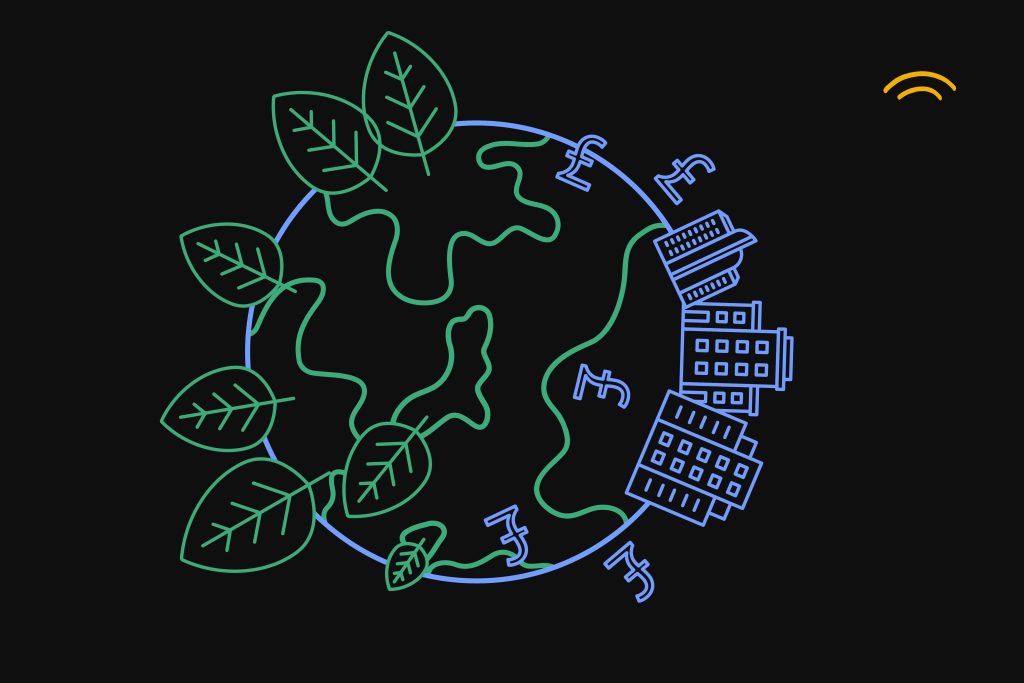
As the demand for sustainable solutions grows, businesses are increasingly accountable for the environmental impact of their products—and packaging is at the forefront of this transformation. Extended Producer Responsibility (EPR) and packaging impact metrics offer a clear path toward reducing packaging waste and moving closer to a circular economy. These strategies require producers to rethink their approach to meet compliance standards and lower the impact of the products they make and sell.
Understanding EPR: A New Framework for Packaging Responsibility
Extended Producer Responsibility (EPR) redefines accountability by requiring producers to manage the entire lifecycle of their packaging, from production to disposal. This policy-based approach places the burden of waste reduction on the businesses that produce and use packaging materials.
“Extended Producer Responsibility revolutionizes the old take-make-waste model by putting packaging’s destiny back in producers’ hands. We’re transforming yesterday’s waste into tomorrow’s resources – this isn’t just about managing waste, it’s about reimagining the entire lifecycle of packaging.”
Bart Nollen
Co-Founder
Dayrize
With EPR, companies are encouraged—and in many cases, mandated—to adopt packaging solutions that are recyclable, biodegradable, or otherwise environmentally friendly. This shift not only meets regulatory demands but also aligns with growing consumer expectations for sustainable products, making EPR a vital tool for today’s forward-thinking brands.
Measuring Packaging Impact: The Importance of Key Metrics
Sustainable packaging starts with a clear understanding of its environmental and social impact. Metrics like recyclability, carbon footprint, and end-of-life disposal options are critical for companies aiming to make informed decisions about packaging materials.
- Recyclability
Choosing recyclable materials helps companies integrate their packaging into a circular economy, reducing reliance on primary resources. Materials such as recycled plastics, glass, and paper have become preferred choices, as they support closed-loop systems that transform waste into new resources. - End-of-Life Disposal
Considering end-of-life disposal options ensures packaging won’t contribute to landfill waste. Materials that can be composted or recycled not only comply with EPR but also meet consumer expectations for responsible disposal. - Carbon Footprint
This metric represents the assessment of the greenhouse gas (GHG) emissions attributable to the product throughout its life cycle, including resource extraction, manufacturing and all distribution legs, including delivery to the door of the customer, otherwise known as “cradle to door.” - Biodiversity Impact: This metric relates to the surface of land that was used to create the materials for a product and its packaging, and also considers both land-use intensity and regional sensitivity to biodiversity loss. Increasing the demand for land use increases the risk of biodiversity loss due to deforestation and other land-use practices. Choosing materials that reduce the land needed for production releases the area for other commercial purposes (e.g. production of food, textiles, or, biomass for energy, textile fibers) or for restoring nature (e.g. reforestation etc), making this practice extremely essential for responsible resource consumption.
- Water System Impact: This metric estimates the extent to which local water systems are stressed throughout the supply chain to make a product and its packaging. To determine this, we take into account the water depletion caused by the production of a product and its raw materials, and a water risk factor derived from the Aqueduct Water Risk tool, developed by the World Resources Institute (WRI). The higher the water depletion, the higher the pressure on freshwater systems, and the impact is compounded when water is depleted from already-stressed water systems. Reducing gross water consumption returning water to the same ecosystems in the same condition (acidity, temperature etc.), and/or sourcing from locations with a lower water risk (higher water availability) helps stabilise the system and will reduce negative impact.
The Role of EPR Compliance: Industry Adaptations and Innovations
Companies are actively adapting their packaging strategies to align with EPR standards, finding innovative ways to meet sustainability goals and avoid the cost of waste management. We’ve seen businesses switch to a number of eco-friendly materials to drive their impact reduction efforts:
- Compostable and Biodegradable Materials
Many companies are shifting to biodegradable packaging materials sourced from renewable resources like cornstarch and bamboo. Compostable packaging offers a waste-free solution that breaks down naturally, supporting a circular economy by minimizing waste in landfills and reducing the reliance on traditional plastics. - Reusable and Refillable Packaging
In a bid to reduce single-use packaging, brands are turning to reusable and refillable options. This approach allows consumers to refill products at home or in-store, dramatically decreasing packaging waste. Sectors such as cosmetics and food are increasingly adopting this trend, fostering brand loyalty among eco-conscious customers. - Lightweight and Reduced Material Usage
Lightweight packaging minimizes raw material consumption and transportation emissions, making it an efficient option for e-commerce and shipping-focused businesses. By optimizing packaging design, companies can decrease environmental impact without sacrificing functionality. - Recycled Content Packaging
Integrating recycled materials into packaging is a powerful way for companies to reduce their environmental footprint while visibly demonstrating a commitment to sustainability. From recycled paper and plastic to glass, using recycled content minimizes the need for virgin materials and helps close the loop on resource use.
Driving Sustainable Packaging Forward
EPR and impact metrics provide a practical framework for companies to design packaging that meets regulatory standards while aligning with consumer expectations. By adopting a circular approach and investing in sustainable packaging materials, businesses can reduce waste and directly contribute to lower-impact industry practices.
Extended Producer Responsibility (EPR) and associated impact metrics across the UK, USA, and EU
In the UK, recent EPR regulations mandate that producers manage the full lifecycle of packaging waste, including the costs of collection, recycling, and disposal, in alignment with circular economy goals. UK regulations prioritise recyclability, waste reduction, and carbon footprint metrics, pushing companies to adopt biodegradable, compostable, or recycled materials to meet consumer expectations.
In the USA, while no federal EPR mandate exists, states like California, Oregon, and Maine have introduced EPR programs, holding producers accountable for the lifecycle of their packaging. Additionally, gradual federal policy shifts are encouraging sustainable packaging standards, and U.S.-based companies are increasingly adopting compostable, reusable, or refillable packaging in response to both consumer and state demands.
The EU has implemented a comprehensive EPR framework through its Circular Economy Action Plan, requiring producers to fund packaging waste management, meet recyclability targets, and adhere to impact metrics including carbon footprint, biodiversity, and water system impacts. The EU’s Packaging Waste Directive further enforces specific recycling rates for packaging materials.
Across these regions, key impact metrics such as recyclability, end-of-life disposal, carbon footprint, biodiversity, and water system impact shape compliance and sustainability efforts, with companies worldwide turning to biodegradable, reusable, and recyclable materials to meet regulatory standards. Reducing packaging weight is also a common strategy, as it minimises raw material use and transportation emissions, supporting efficiency and aligning with global regulatory trends. Collectively, these regulatory frameworks encourage packaging solutions that reduce environmental impact, enhance recyclability, and support a transition towards a circular economy, driving companies globally to innovate and prioritize sustainable materials.
Want to understand how your packaging measures up? Book a demo of our sustainability intelligence platform and unlock packaging impact insights.

